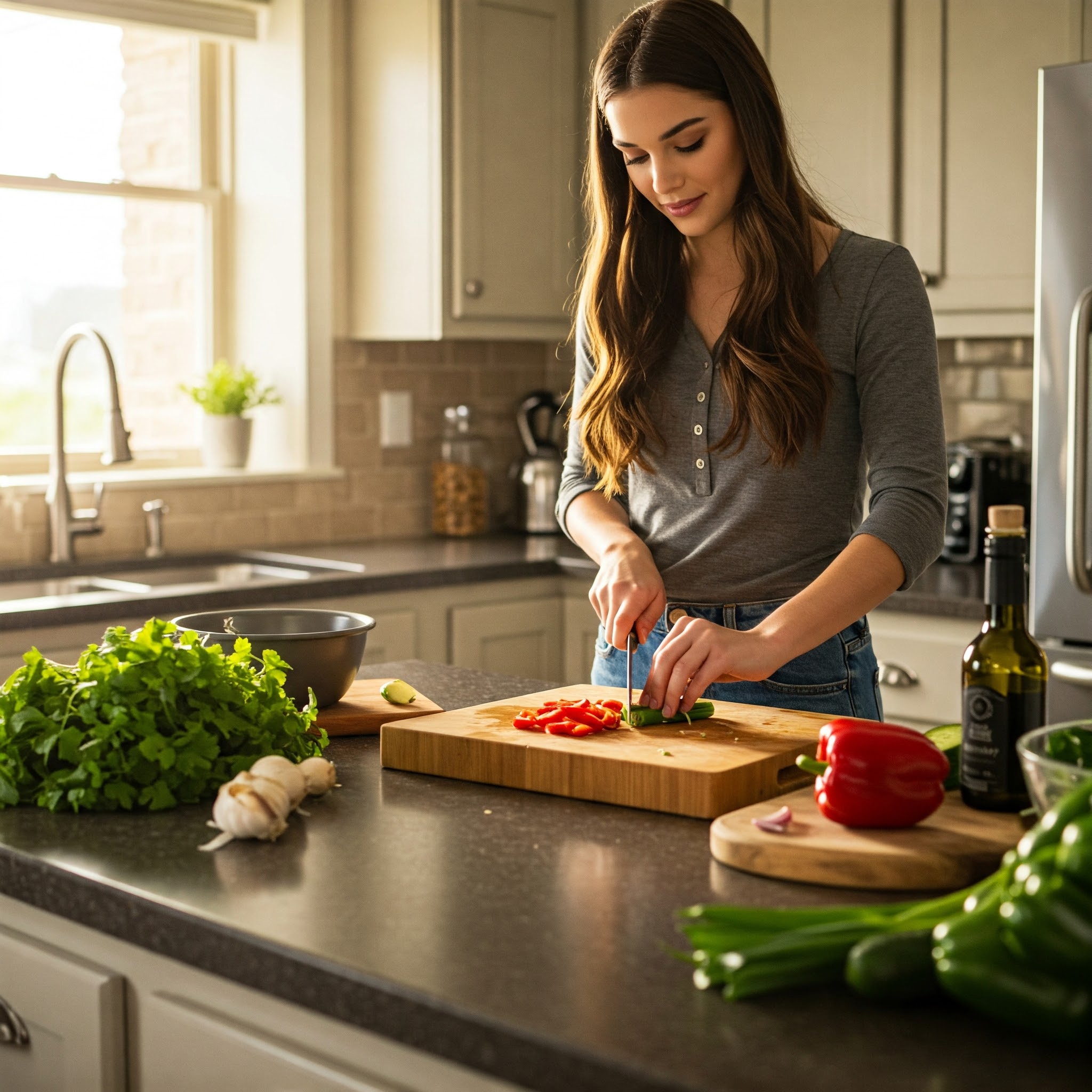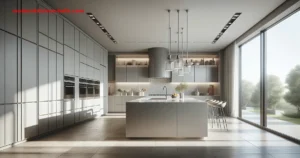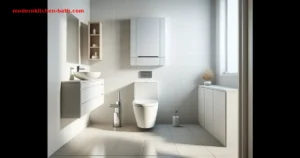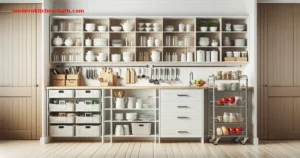Kitchen countertops are undeniably a major visual element in any kitchen design. They dictate style, color palettes, and overall aesthetic appeal. However, countertops are also arguably the hardest-working surfaces in your entire home. They endure daily food prep, spills, hot pans, dropped utensils, and constant cleaning. Therefore, while choosing a beautiful countertop is important, focusing on its functionality – how it performs under daily use – is absolutely paramount for creating a kitchen that is both stunning and practical for years to come. This guide explores the key aspects of kitchen countertop functionality to help you make an informed decision.
Core Functions of Kitchen Countertops
Your countertops serve multiple essential roles:
- Food Preparation Surface: Chopping, mixing, rolling dough, assembling meals.
- Landing Zones: Space to place items from the refrigerator, oven, microwave, or grocery bags.
- Housing Fixtures: Accommodating sinks and cooktops.
- Serving Area: Buffet space during gatherings.
- Informal Dining: Often incorporated into islands or peninsulas with seating.
- General Workspace: For various kitchen tasks beyond cooking.
Key Aspects of Countertop Functionality
When evaluating countertop options, consider these critical functional characteristics:
1. Durability & Longevity
How well will the surface hold up to daily wear and tear?
- Scratch Resistance: Consider how easily the surface might scratch from knives (always use a cutting board!), dragging pots, or abrasive cleaners. Materials like quartz and granite are highly scratch-resistant, while laminate, solid surface, and wood are more susceptible.
- Heat Resistance: Can you briefly place a hot pan directly on the surface without causing damage like scorching, cracking, or discoloration? Granite and quartz generally offer good heat resistance (though trivets are always recommended for prolonged heat), while materials like laminate, solid surface, and butcher block can be easily damaged by heat.
- Impact Resistance / Chipping: How likely is the countertop to chip or crack if a heavy object is dropped? Quartz and granite are quite durable, but edges can chip under sharp impact. Tile grout can crack, and tiles themselves can chip. Laminate can dent or chip along edges.
2. Maintenance & Ease of Cleaning
How much effort is required to keep the countertop looking good and hygienic?
- Stain Resistance: How well does the material resist common kitchen spills like wine, coffee, oil, or acidic foods (lemon juice, vinegar)? Non-porous materials like quartz and solid surface excel here. Sealed granite is quite resistant. Porous materials like unsealed marble, concrete, and butcher block are highly susceptible to staining.
- Sealing Requirements: Does the material require periodic sealing to protect it from stains and moisture? Natural stones like granite and marble, as well as concrete and wood, need regular sealing (frequency varies). Quartz, solid surface, laminate, and stainless steel are non-porous and do not require sealing.
- Cleaning Routine: Can it be easily wiped down with soap and water, or does it require specialized cleaners? Avoid abrasive cleaners on most surfaces. Tile grout lines require extra scrubbing.
- Porosity & Hygiene: Non-porous surfaces (quartz, solid surface, stainless steel) are inherently more hygienic as they don’t harbor bacteria as easily as porous materials. Properly sealed porous materials are generally safe, but spills should be wiped promptly.
3. Suitability for Food Preparation
How does the surface perform as a workspace?
- Food Safe Surface: Most common countertop materials are considered food-safe for direct contact, but it’s always good practice to use cutting boards and prep mats.
- Ease of Pastry/Dough Work: Cool, smooth surfaces like natural stone, quartz, or stainless steel are often preferred for rolling out dough.
- Direct Cutting: Generally not recommended on most countertops, except for butcher block which is designed for it (and will show knife marks as part of its character). Cutting directly on stone or quartz will dull your knives quickly and can potentially damage the surface over time. Always use cutting boards.
4. Layout and Workspace Functionality
Functionality also depends on how countertops are integrated into the kitchen layout:
- Sufficient Prep Space: Ensure ample uninterrupted counter space, especially between the sink and range – the primary prep zone.
- Dedicated Landing Zones: Plan for counter space next to key appliances:
- Refrigerator: For loading/unloading groceries.
- Oven/Cooktop: For placing hot dishes.
- Microwave: For placing items before/after heating.
- Countertop Depth: Standard depth is typically 24-25 inches. Deeper countertops (e.g., 30 inches) can provide significantly more workspace but require careful layout planning.
- Sink & Cooktop Integration: Undermount sinks create a seamless transition for easier cleaning compared to drop-in sinks. Flush-mount or induction cooktops offer a sleeker look than traditional ranges.
(Optional) Integrated Features
Some countertops incorporate functional enhancements:
- Built-in Drainboards: Grooves routed into the countertop next to the sink to channel water away.
- Integrated Sinks: The sink is made from the same material as the countertop (common with solid surface).
- Pop-up Outlets / Charging Stations: Can be integrated for convenience, especially on islands.
Matching Functionality to Your Lifestyle
Prioritize functionality based on how you live and cook:
- Avid Home Cook/Baker: Prioritize durability, heat resistance, and ample prep space (Granite, Quartz).
- Busy Family with Kids: Focus on low maintenance, stain resistance, and ease of cleaning (Quartz, Solid Surface).
- Budget-Conscious Remodeler: Consider durable and affordable options (Laminate offers style but lower durability; some Granite options can be competitive).
- Aesthetic-Focused: If looks are paramount and you’re diligent with upkeep, higher-maintenance beauties like Marble or Butcher Block might be viable.
Material Functionality Overview (Brief Summary)
- Quartz: Highly durable, non-porous, low maintenance, stain/scratch resistant, good heat resistance (use trivets). Wide style range.
- Granite: Very durable, heat resistant, scratch resistant. Porous, requires regular sealing to resist stains. Unique natural patterns.
- Laminate: Most budget-friendly, vast style options. Less durable, susceptible to scratches, heat damage, and chipping. Non-porous.
- Solid Surface (e.g., Corian): Seamless appearance, repairable scratches, non-porous. Moderate durability, susceptible to heat and deep scratches.
- Butcher Block (Wood): Warm aesthetic, requires regular oiling/sealing, susceptible to stains/scratches/water damage if not maintained, can be sanded down. Can cut on it (develops patina).
- Marble: Unmatched natural beauty. Porous, stains and etches (from acids) very easily. High maintenance (needs sealing, careful cleaning). Develops a patina over time.
- Stainless Steel: Very hygienic, heat resistant, durable. Shows fingerprints and scratches easily, can dent. Industrial look.
- Concrete: Customizable look, durable. Porous (requires sealing), potential for hairline cracks, heavy.
- Tile: Heat resistant, durable tiles. Grout lines require regular cleaning and potential resealing, can be uneven surface.
Conclusion
When selecting kitchen countertops, it’s tempting to focus solely on color and pattern. However, prioritizing functionality – considering how the material holds up to heat, scratches, stains, and impacts, how easy it is to clean and maintain, and how well it suits your cooking and lifestyle needs – is crucial for long-term satisfaction. The “best” countertop isn’t just the prettiest; it’s the one that performs reliably day after day, making your time in the kitchen easier and more enjoyable. By carefully evaluating the functional aspects alongside the aesthetics, you can choose a countertop that truly works for you







Leave a Comment